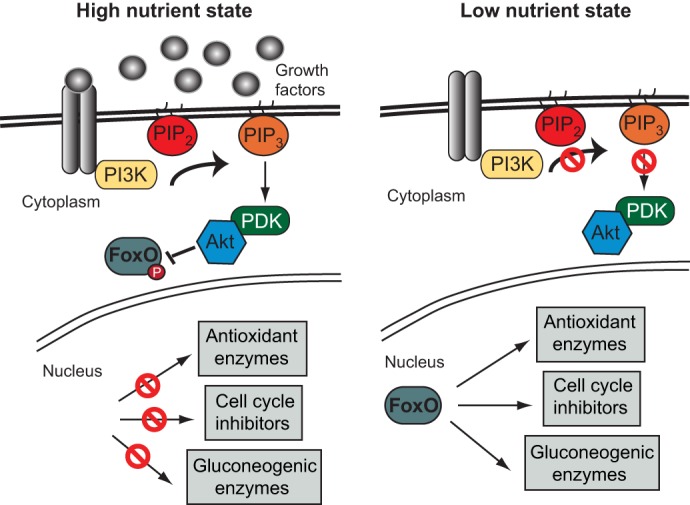Fig. 5.

FoxO regulation in response to insulin signaling in mammals. The binding of growth factors to their receptors triggers a phosphorylation signaling cascade involving phosphoinositide 3-kinase (PI3K), phosphatidylinositol (4,5) bisphosphate (PIP2), phosphatidylinositol (3,4,5)-trisphosphate (PIP3), pyruvate dehydrogenase kinase (PDK) and Akt that ultimately results in the phosphorylation of FoxO. This phosphorylation confines FoxO to the cytoplasm. In the absence of growth factor signaling, including that of insulin, FoxO is thus present in the nucleus, where it upregulates anti-stress genes and cell cycle inhibitors. FoxO also regulates gluconeogenic genes in the mammalian liver to protect from hypoglycemia. Modified from Golson et al. (2010).
